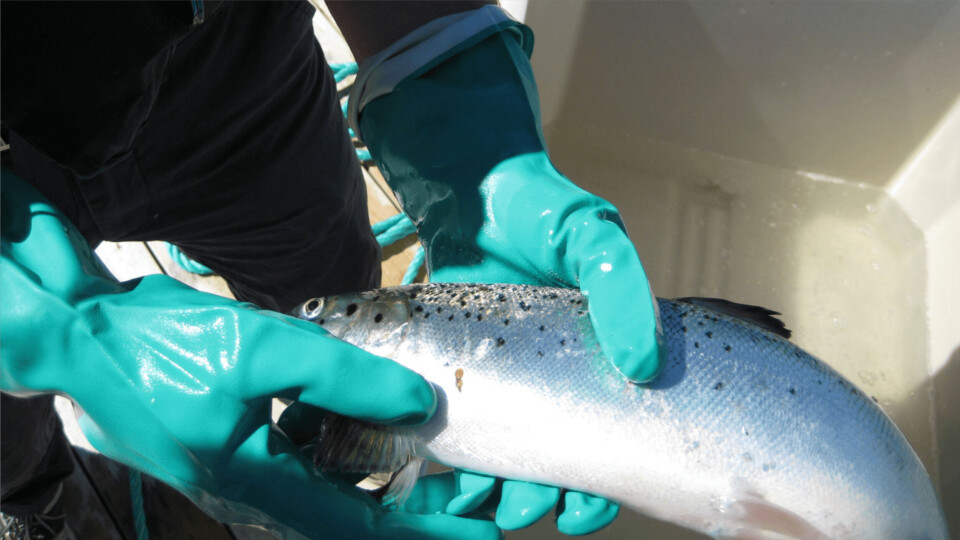
Stricter lice limits 'make no difference for wild fish'
Stricter lice limits for Norwegian salmon farms do not appear to have reduced the infection pressure on wild salmon in several production areas, according to research.
In 2017, the lice requirement was tightened for the period in the spring, from 0.5 lice per fish to 0.2. This was done to reduce the infection pressure on wild salmon as they migrate from the rivers and out to sea.
Researchers at the Fridtjof Nansen Institute (FNI) have studied the environmental effect of these lice requirements by evaluating how the tightening has affected the lice level at the fish farms, and whether the farmers’ compliance with the limits has reduced the infection pressure on wild salmon.

Farmers comply
Marie Lie Larsen, a research fellow with FNI, gave a talk about their work during the TekMar conference, which was held digitally on Tuesday this week. She told Fish Farming Expert’s Norwegian sister site, Kyst.no, that they found that stricter lice requirements had reduced the lice level at the sites, and almost all farmers are able to comply with the requirements.
“However, we found no observable effect on the infection pressure on wild fish,” she said.
More specifically, researchers found no connection between the infection pressure on the wild salmon and:
- the proportion of localities that comply with the lice requirement
- the total number of lice in a production area
- the increased proportion of lice in a production area as a result of exceeding the lice requirement.
Effect limited or absent
In the areas they have investigated, which are production zones 3,4,5 and 7, areas with relatively high aquaculture activity, the researchers’ analyses indicate that the environmental effect of stricter lice limits has been limited or absent.
“It does not appear that successful compliance with the lice requirements reduces the infection pressure on wild salmon in the areas we have investigated,” Larsen points out.
Asked what negative consequences a stricter lice limit can have for farmed fish, Larsen said: “In order to comply with strict lice requirements, fish farmers must treat the fish more frequently, at the same time we see that new de-lousing methods have led to reduced fish welfare and increased mortality among farmed fish. Data indicate a relationship between the number of treatments and mortality among farmed fish.”
Complex picture
Asked if the authorities should act differently when it comes to fighting lice, the researcher said: “This is a complex picture, and there are many variables that come into play.
“It is important to evaluate the environmental effects of regulations that are introduced. This study can probably indicate that the authorities should to a greater extent regulate more conditions than lice per fish in order to reduce the infection pressure on the wild salmon stocks and improve the welfare of the farmed fish in the cage.”
The Fridtjof Nansen Institute is an independent foundation engaged in research on international environmental, energy and resource management politics and law.
FNI is the research arm of the Fridtjof Nansen Foundation at Polhøgda, established in 1958 to conduct research within the interest areas of Fridtjof Nansen, a Norwegian polar explorer, scientist, humanist, Nobel Peace Prize laurate and diplomat who served as the country’s first ambassador to the United Kingdom after it gained independence from Sweden in 1905.




















































